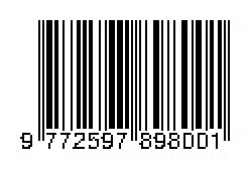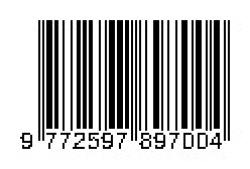HUBUNGAN KONSEP DIRI DENGAN MISKONSEPSI SISWA PADA KONSEP KESETIMBAGAN KIMIA
(1) Program Studi Pendidikan Kimia FMIPA Universitas Negeri Makassar
(2) Program Studi Pendidikan Kesejahteraan Keluarga FT Universitas Negeri Makassar
(*) Corresponding Author
DOI: https://doi.org/10.35580/ipaterpadu.v5i1.25499
Abstract
Penelitian survey ini bertujuan mendeskripsikan hubungan antara konsep diri siswa dengan miskonsepsinya pada konsep Kesetimbangan Kimia (KK). Subjek penelitian sebanyak 235 siswa dari tiga SMA di kabupaten Gowa (80 siswa SMAN 1 Gowa; 83 Siswa SMAN 2 Gowa; dan 72 siswa SMAN 3). Penelitian ini dilakukan pada semester Ganjil 2018/2019. Instrumen Tree-tier Diagnostik pada konsep KK sebanyak 30 item dan angket konsep diri siswa pada konsep KK 20 item. Hasil penelitian menunjukkan konsep diri berkorelasi negatif dengan jumlah miskonsepsi siswa pada konsep KK (masing-masing -0,384, -0,254, dan -0,327). Hal ini menunjukkan bahwa semakin baik konsep diri siswa pada konsep-konsep Kesetimbangan Kimia, maka akan semakin kecil jumlah miskonsepsi yang dialaminya.
Full Text:
PDFReferences
Arslan, H.O., Cygdemoglu, C., & Moseley, C. (2012). A-Three-Tier Diagnostic Test to AssessPre-
Service Teachers’ Misconceptions about Global Warming, Greenhouse Effect, Ozone Layer Depletion, and Acid Rain. International Journal of Science Education, 34(11): 1667–1686.
Banerjee, A.C. (1991). Misconceptions of Students and Teachers in Chemical Equilibrium. International journal of Science Education, 13(4): 487-494.
Barke, H.D; Hasari, A; Yitbarek D. (2009). Misconceptions in Chemistry. Book Chapter (145-170). Verlag Berlin Heidelberg: Springer.
Bauer, C.F. 2005. Beyond “Student attitude”: Chemistry Self Concept Inventory for Assesment of the Affective Component of Student Learning. Journal Chemical Education, 82(12), 1864-1870.
Bong, M & Skaalvik, E.M. 2003. Academic Self Concept and Self Efficacy: How Different are They Really? Educationan Physicology Review, 15(1), 1-40.
Bilgin, I, Uzunttiryaki, E, (2003). Students’ Misconception on the Concept of Chemical Equilibrium.Education and Science, 28(127): 10-17.
Burdge, J., & Overby, J. (2017). Chemistry atom (3rd ed.). McGraw Hill.
Gorodetsky, M. & Gussrasky, E. (1986). Misconceptualization of the Chemical Equilibrium Concept as Revealed by Different Evaluation Methods. Euoropa Journal Science Education. 8(4): 427-441.
Hackling, M. W & Garnett, P. J. (1985). Misconceptions of Chemical Equilibrium. European Journal of Science Education, 7(2), 205–214. https://doi. org/10.1080/0140528850070211
Herron, J.D. (1996). The Chemsitry Classroom Formula for Successful Teaching. Whasington, DC: American Chemical Society.
Horton, C. (2007). Students Alternative Conception in Chemistry. California Journal of Science Education, 7(2): 18-38.
Jusniar, Effendy, Budiasih, E., & Sutrisno. (2019). The Misconception of Stoichiometry and its Impact on the Chemical Equilibrium. Advance in Social Science, Education, and Humanities Research. 227, 138–141.
Jusniar, J., Effendy, E., Budiasih, E., & Sutrisno, S. (2020). Developing a three-tier diagnostic instrument on chemical equilibrium (TT-DICE). Educacion Quimica, 31(3), 84–102. https://doi.org/10.22201/fq.18708404e.2020.3.72133
Karpudewan, M., Treagust, D. F., Mocerino, M., Won, M., Chandrasegaran, A.L. (2015). Investigating High School Students’ Understanding of Chemical Equilibrium Concepts. International Journal of Enviromental &Science Education, 10 (6): 845-863.
Koutshana, M & Tsaparlis, G. (2002).Students’ Errors in Solving Numerical-Equlibrium Problems. Chemistry Education: Research and Practice in Europe, 3(1): 5 -17.
Nakhleh, M.B, (1992). “Why Some Student Don’t Learn Chemistry (Chemical Misconception)”. Journal of Chemical Education, 59(3): 191-194.
Nielsen, S.E & Yezierski, E. 2015. Eksploring the Struktur and Function of the Chemistry Self Concept Inventory With High School Chemistry Scudent. Journal of Chem. Eduation, 1-8.
Nieswandt, M. 2007. Student Affect and Conceptual Understanding in Learning Chemistry. Journal of Research in Science Teaching, 44(7), 908-937.
Ozmen H. (2008). Determination of Students’ Alternative Conceptions about Chemical equilibrium: a Review of research and the Case of Turkey. Journal Chemistry Education Research and Practise, 9, 225-233.
Piquitte, J. S. & Heikkinen, H. W. (2005). Strategies Reported Used by Instructors to Address Student Alternate Conceptions in Chemical Equilibrium. Journal of Research in Science Teaching, 42 (10): 1112-1134.
Quilez, J; Solaz, J.J. (1995). Students’ and Teachers’ Misapplication of Le Chatelier’s Principle: Implication for the Teaching of Chemical Equilibrium. Journal of Research in Science Teaching, 32(9), 939-957.
Sozbilir, M., Pinarbasi, T., Conpolat. (2010). Prospective Chemistry Teachers’ Conceptions of Chemical. Eurasia Journal of Mathematic, Science, and Technology Education, 6(2): 111-120.
Tyson, L; Treagust, D.F; Bucat, R.B. (1999). The complexity and Leaching and Learning Chemical Equilibrium. Journal of Chemical Education, 79 (4), 554-558.
Voska, K.W & Heikkinen, H.W. (2000). Identification and Analisys of Students Conception Used to Solve Chemical Equilibrium Problems. Journal of Research in Science Teaching. (32) (2): 160-176.
Yakmaci-Guzel, B. 2013. Preservice Chemistry Teacher in Action: As Evaluation of Attempts for Changing High School Students’ Chemistry Misconception into More Scientific Conception. Chemistry Education Research and Practice, 14, 95-104.
Article Metrics
Abstract view : 611 times | PDF view : 114 timesRefbacks
- There are currently no refbacks.
Published by:
Program Studi Pendidikan IPA FMIPA
Universitas Negeri Makassar
Alamat Redaksi:
Indexed By:

Jurnal IPA Terpadu (JIT) is licensed under a Creative Commons Attribution-NonCommercial 4.0 International License.

.png)






